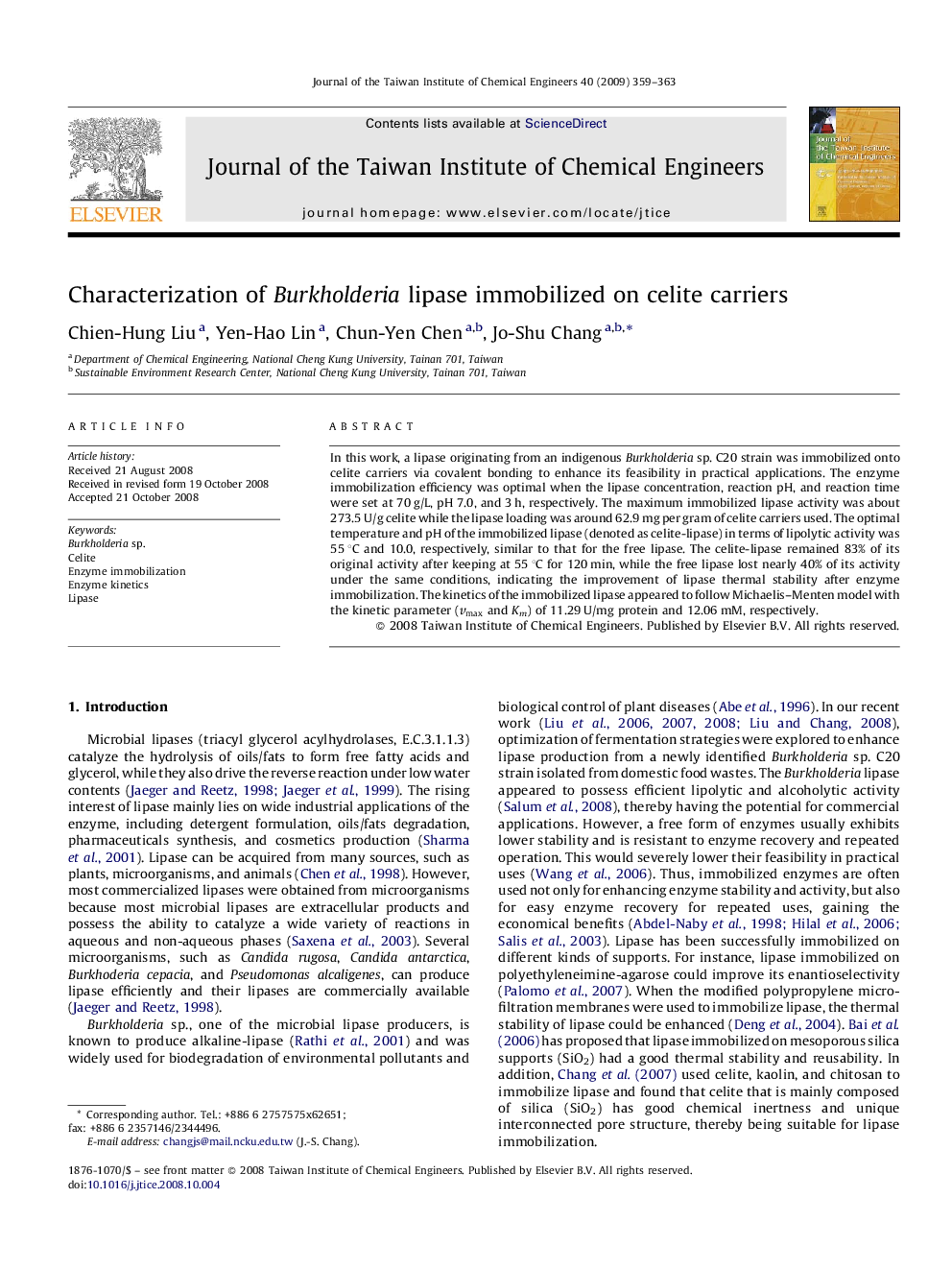| Article ID | Journal | Published Year | Pages | File Type |
|---|---|---|---|---|
| 691844 | Journal of the Taiwan Institute of Chemical Engineers | 2009 | 5 Pages |
In this work, a lipase originating from an indigenous Burkholderia sp. C20 strain was immobilized onto celite carriers via covalent bonding to enhance its feasibility in practical applications. The enzyme immobilization efficiency was optimal when the lipase concentration, reaction pH, and reaction time were set at 70 g/L, pH 7.0, and 3 h, respectively. The maximum immobilized lipase activity was about 273.5 U/g celite while the lipase loading was around 62.9 mg per gram of celite carriers used. The optimal temperature and pH of the immobilized lipase (denoted as celite-lipase) in terms of lipolytic activity was 55 °C and 10.0, respectively, similar to that for the free lipase. The celite-lipase remained 83% of its original activity after keeping at 55 °C for 120 min, while the free lipase lost nearly 40% of its activity under the same conditions, indicating the improvement of lipase thermal stability after enzyme immobilization. The kinetics of the immobilized lipase appeared to follow Michaelis–Menten model with the kinetic parameter (vmaxvmax and Km) of 11.29 U/mg protein and 12.06 mM, respectively.
